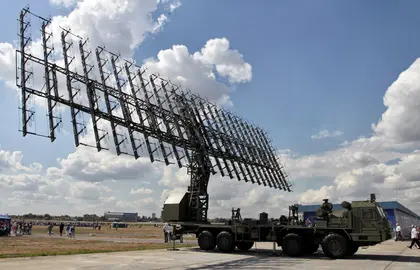The Security Service of Ukraine (SBU) targeted a Russian long-range radar station in the Bryansk region, which was monitoring the sky 700 km deep into Ukrainian territory, sources within the special services informed Kyiv Post.
“The Russians now have one less modernized Nebo-U complex,” the source said.
JOIN US ON TELEGRAM
Follow our coverage of the war on the @Kyivpost_official.
This radar helped Russian troops detect Ukrainian weapons and supported bombers attacking Ukrainian border settlements with guided aerial bombs.
The radar, valued at $100 million, was hit by seven aircraft-type kamikaze drones. According to sources, the Nebo-U complex is no longer operational and has “likely turned into a colander.”
The source added that the destruction of this radar has limited Russian troops’ ability to detect air targets along the northern border of Ukraine.
“The radar blackout for the Russians will assist our troops in conducting reconnaissance, launching drones, and making better use of army aviation in this area,” the source told Kyiv Post.
This marks the second Nebo-U complex destroyed by the 13th Main Directorate of Military Counterintelligence of the SBU. The first was destroyed in Russia’s Belgorod region, according to the source’s data.
The Russian Nebo-U, a modernized version of the Soviet-era Nebo radar, is intended for detecting, measuring the coordinates and tracking air targets of various categories from aircraft to cruise and guided missiles, including small hypersonic, ballistic and subtle missiles using stealth technologies at 600 km. The complex was adopted by the Russian army in 1995.

Moscow Residents Offered $22,000 Military Sign-up Bonus
In March, the Special Operations Forces (SSO) announced the successful destruction of the Zhitel Russian electronic warfare complex in the Zaporizhzhia region.
Previously, the SSO reported the successful destruction of the Russian Zoopark-1 surveillance and fire control radar complex, a highly valued asset often touted by the Russian military. The radar station, along with its crew, was eliminated. According to open-source data, the complex is estimated to cost approximately $10-15 million.
You can also highlight the text and press Ctrl + Enter






